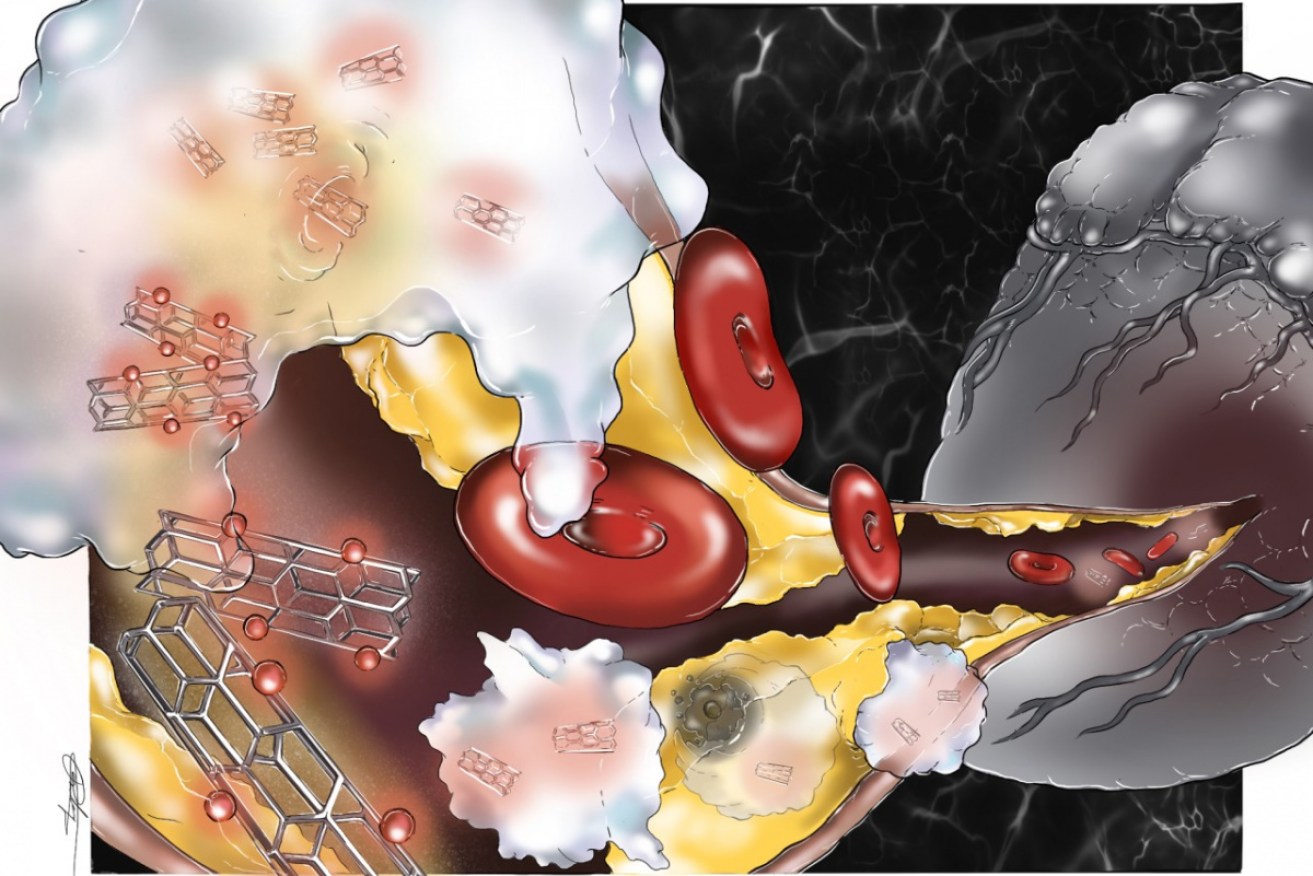New nano-device eats the plaque that clogs arteries: On market this year


A diagram depicting the nanoparticles' carbon nanotubes at work on a plaque deposit. Illustration: Bryan Smith/Michigan State University
A US researcher has filed a provisional patent for a nanoparticle device that apparently eats away – “from the inside out” – atherosclerotic plaques that cause heart attacks.
And the man behind the device expects to start marketing it for sale by the end of the year.
Dr Bryan Smith, associate professor of biomedical engineering at Michigan State University, in collaboration with scientists from Stanford University, has created what he calls a “Trojan horse nanoparticle that can be directed to eat debris, reducing and stabilising plaque”.
Plaque and macrophages explained
Plaque or fatty deposits are made up of cholesterol, a variety of fatty substances, cellular waste products, calcium and fibrin, a clotting factor in the blood.
Plaque causes lesions in the artery wall. Branching points and bends in the artery are especially prone to atherosclerotic lesion development.
But plaque buildup – formally known as atherosclerosis – isn’t simply a matter of fat gathering into a lump that becomes a blockage.
In fact, it can be regarded as a chronic inflammatory condition.
- Related story: Bushfire smoke linked to cardiac arrest risk
Atherosclerosis depends on a complex relationship with an immune cell type called a macrophage. These are white blood cells formed in response to an infection or accumulating damaged or dead cells.

The dotted line outlines the atherosclerotic artery and the green represents the nanoparticles, which are in the plaque. The red indicates macrophages, which are the cell type that the nanoparticles are stimulating to eat the debris. Images: Michigan State University
Pro-inflammatory macrophages play an important role in the initiation and the progression of the plaque.
Within a lesion, macrophages take up large amounts of cholesterol – and this in turn exacerbates lesion formation and fat deposits.
Hence, macrophages promote formation of complicated and unstable plaques by maintaining a pro-inflammatory microenvironment.
At the same time, anti-inflammatory macrophages contribute to tissue repair and remodelling and plaque stabilisation.
So where does the nano-device fit into this?
The idea is that a solution containing the nanoparticles will be introduced to a patient intravenously, proceeding to flow through their bloodstream.
According to a statement from Michigan State University, the new nanoparticle contains single-walled carbon nanotubes that are loaded with an SHP1 inhibitor – and this is directly targeted at pro-inflammatory macrophages that feature an SHP1 signalling pathway.
- Related story: ‘Nano-thin’ touchscreens coming to phones
This pathway stops the macrophages from consuming apoptotic (dead) cells and cell debris, which actually make up the core of plaque deposits.
With the SHP1 pathway shut down, however, the macrophages are triggered to eat the plaque.
“In other words, they cause the plaques to eat themselves from the inside out, thus reducing their size and stabilising their growth,” the university says.
Dr Smith said future clinical trials on the nanoparticle are expected to reduce the risk of most types of heart attacks, with minimal side effects due to the unprecedented selectivity of the nano-drug.
“We found we could stimulate the macrophages to selectively eat dead and dying cells – these inflammatory cells are precursor cells to atherosclerosis – that are part of the cause of heart attacks,” Dr Smith said.
“We could deliver a small molecule inside the macrophages to tell them to begin eating again.”








